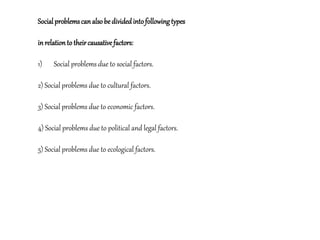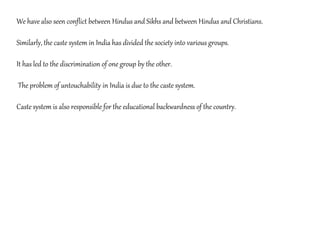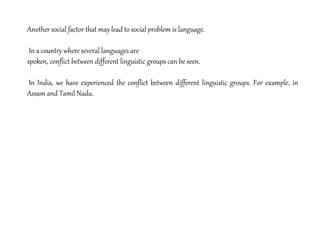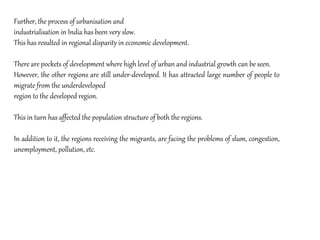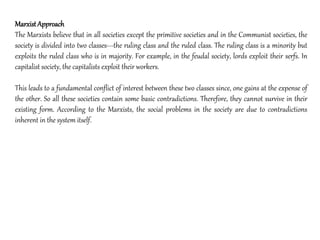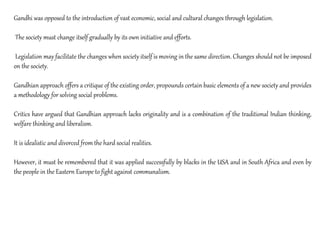Certain situations that violate social norms can be considered social problems. They hinder normal societal functioning. Social problems arise from deviations from ideal norms and values. Examples include drug addiction, terrorism, and environmental degradation. What is considered a problem can vary between societies based on differing norms. Social problems are generally defined as conditions substantially violating cherished social norms. Causes of social problems include factors like social disorganization, inadequate social systems, and deviant individual behavior. Approaches to studying social problems include functional, Marxist, and Gandhian perspectives.






